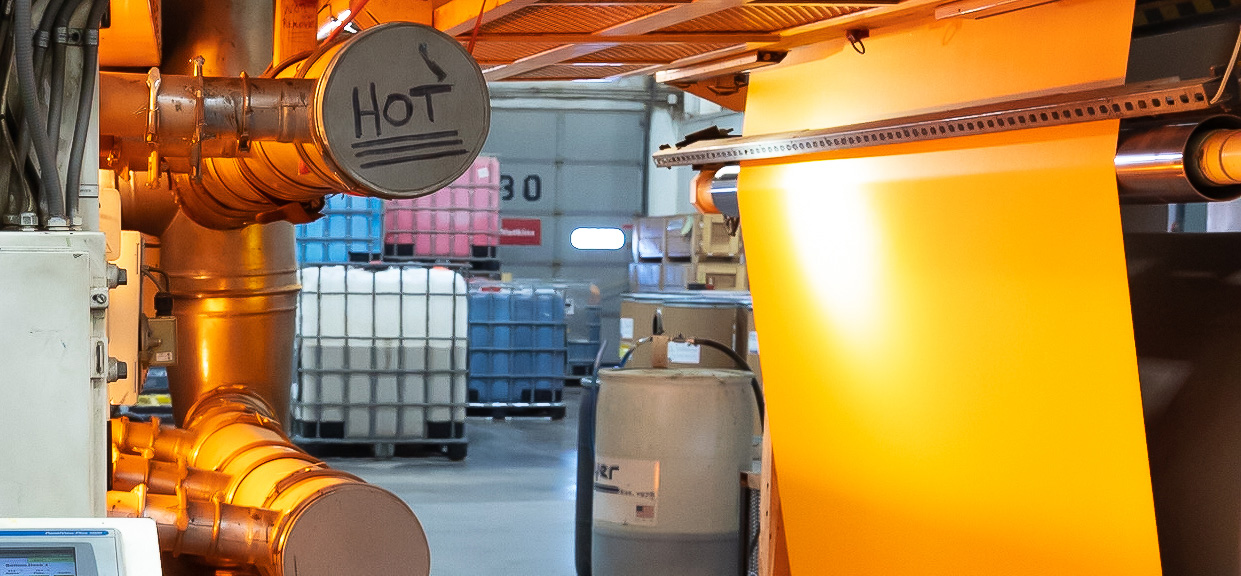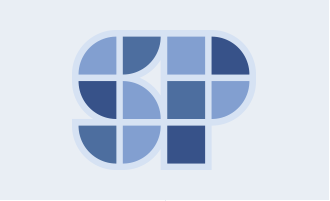How to build a dream machine
How two corrugated- and box-industry veterans at Heartland Sheets turned an under-performing printer into a one-of-a-kind technicolor powerhouse. They call it ColorCorr.
The story of ColorCorr® begins circa 2015. Chris Burk, now general manager at Heartland Sheets, and Charlie Freeman, the plant’s sales manager, were deciding what to do with their new 110-inch printer, a two-color servo-driven flexo printing press that had been, well, underperforming.
“We bought the machine, and when it arrived, it should have worked, but it didn’t,” Charlie said. “Waste was 18-20%, downtime was excessive and the quality was not repeatable. Every time we used it became an event.”
Chris, who has a strong technical background, went to work with his team to solve the printer’s problems. First, he carefully observed how the machine was being run and who was running it. Next, he worked with Matt Wolfe and Robbie Rollings to rewrite the programming. Then they drafted procedures to help the printer’s operators run the physical machine more effectively.
The updates worked, and a brand-new printer was born: ColorCorr. “There’s no other printer or process quite like it,” said Charlie, who collaborated with Chris to coin the printer’s new name. “We developed ColorCorr onsite, and the serial number is No. 1.”
In this Q&A, learn why ColorCorr has become Heartland’s dream machine. (We’ve combined answers from Chris and Charlie, who tend to finish each other’s sentences.)
What do you print using ColorCorr?
ColorCorr sheets are used in high-end displays that end up in major retailers across the country. Our primary product is solid print, but we can also print two colors. The width of printing is 108.5 inches on 110-inch paper, and the length is 41 to 58 inches.
Where can we see ColorCorr corrugated?
Look for corrugated displays in Home Depot, Wal-Mart, Target, Hallmark and other retailers, especially around the holidays, Easter and back-to-school season.
How many colors can you print?
As of today, we’ve matched over 600 colors. We have a representative from our ink supplier onsite, and we supply exact custom matches for our customers. We don’t use any stock colors. We can do matches to Pantone (PMS) or GCMI book colors, or we take samples and directly match the ink formula. We’re able to get extremely close matches – holding 1.5 to 2 delta E from target.
Tell us more about the types of corrugated you produce in color.
In terms of the paper we use, most ColorCorr is printed on white top liner, but we also print on clay-coated liners. We can create color sheets for a range of products. They may be printed inside or outside regular slotted containers or they could be used in displays. Sometimes our sheets are used for boxes where customers print on top of what we’ve printed. Many of the bright yellow DeWalt boxes you see in home improvement stores have been printed on our yellow sheets. We also print sheets before they’re scored, which simplifies things on the back end.
Can you share some of the things you do for your customers?
ColorCorr was inspired by our customers. The region surrounding Kansas City is a high-creativity market, and our customers are looking for the highest level of quality, so we had to be at the top of our game from the beginning. A focus on quality drives everything we do. To make sure customers are satisfied, we spend a lot of time working with them on quotes and scheduling. We custom schedule and custom quote every ColorCorr item individually because every display is unique. To do that, we get a list of everything customers need for their displays, then schedule the orders in advance so we can make suggestions that can help reduce waste and cost.
Does anyone else do what you do with ColorCorr?
Do others run printed sheets? Yes. Do others run solid printed sheets for display? Yes. The difference with ColorCorr is the fact that we print the paper in-line before the liner becomes corrugated. That gives a much higher quality and smoother printing than is generally possible when printing directly on corrugated. Very few printers in the United States have this capability.
When people print color on corrugated, especially heavy print and 100% coverage, they’re usually printing on an uneven surface. We print sheets before they get combined with a single-face sheet on the double-face line. This gives us the advantage of printing on steel instead of against a fluted single-face surface. It gives the corrugated a smooth, clear appearance.
Sounds like an innovative approach. Is that how you always work at Heartland?
Yes, we do like to be known as trendsetters. Innovation and problem solving are a big part of our culture. We like to do the stuff nobody else can or wants to do. That’s why we’ve focused on ColorCorr and worked to create a niche market.
Another benefit of ColorCorr is the way it has raised the level of quality and efficiency at the plant overall. For example, we have four people from four different departments looking at each order as soon as the email comes in, and we gather feedback before we even accept the order. That collaboration makes for a fluid operation.
How does the printer work?
There’s a roll and a flexo stack. On most flexos you have a plate that has a beginning and end. On this machine, the print surface is a rubber cylinder, so it doesn’t have an end. So, if we were printing something in two colors, like wrapping paper, it would be engraved on the rubber cylinder so it wouldn’t have a break in the print. That’s one thing this machine is well suited for.
We’ve heard you can print quickly.
Yes. Because the machine is in line with the corrugator, it speeds up turnaround times. Some competitors bring in paper from offline printers using a rod coater or preprint mill, then run the orders. That could take two to four weeks. Our turnaround time is three to five days, and our target is 72 hours from approved color with a purchase order to delivery.
So, you’re able to process smaller orders?
Our minimums are much smaller than those running preprint. On days when we are running print, we can run as little as 2,500 lineal feet of a custom color.
And you solved the waste problem, too?
We sure did. Our waste using ColorCorr is now about the same as our plant waste, between 5.5 and 8%. We’re very efficient, and we pass those savings on to our customers.
Want to learn more about ColorCorr?
Contact Heartland’s ColorCorr team at color@heartlandsheets.com.





